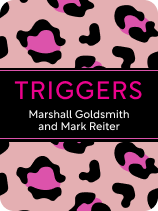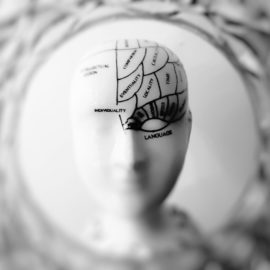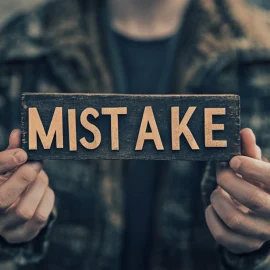

This article is an excerpt from the Shortform book guide to "Triggers" by Marshall Goldsmith and Mark Reiter. Shortform has the world's best summaries and analyses of books you should be reading.
Like this article? Sign up for a free trial here.
What are triggers in psychology? How do triggers affect your behavior?
Triggers are stimuli in your environment that prompt you to behave in specific ways. A trigger can be any stimulus you might encounter during your day and react to at that moment, such as a traffic jam, a string of notifications on your phone, or a demanding colleague.
Here’s a look at the types of triggers plus some examples.
Types of Behavioral Triggers
Every day, we encounter triggers that prompt us to behave in certain ways. A trigger can be positive or negative, pleasant or unpleasant, productive or unproductive. Similarly, some push us toward our goals while others pull us away from them.
In their book Triggers, Marshall Goldsmith and Mark Reiter identify two types of triggers.
First, Goldsmith and Reiter explain that triggers can be helpful versus unhelpful and pleasant versus unpleasant in nature. A helpful trigger pushes you toward your goals, while an unhelpful trigger pulls you away from your goals. Pleasant triggers feel rewarding, and unpleasant triggers feel punishing. For example, your spouse’s exasperated reminder about the errands you need to run is helpful but unpleasant. Conversely, the dopamine surge you get from browsing social media during your colleague’s presentation is pleasant but unhelpful—and hazardous because it makes it feel rewarding to take a step away from your goal.
| Reinforcement, Punishment, and How We Learn From Our Choices The pleasantness and helpfulness of triggers can influence your choices, but the consequences that follow your behavior can reinforce or punish those choices after you make them. Psychologist B.F. Skinner investigated how these consequences influence our behavior and outlined four mechanisms to explain how this happens: -Positive reinforcement provides a favorable outcome and incentivizes a behavior. – Negative reinforcement removes an unfavorable outcome and incentivizes a behavior. – Positive punishment provides an unfavorable outcome and disincentivizes behavior. – Negative punishment removes a favorable outcome and disincentivizes a behavior. Skinner’s classic framework can help us understand why some triggers help us move toward our goals, and others undermine our pursuit of those goals. For example, a pleasant but unhelpful trigger might provide positive reinforcement for a behavior that will be unproductive in the long run. Conversely, an unpleasant but helpful trigger might punish us for a behavior that’s hurting us and disincentivize us from continuing that behavior in the future. |
Second, Goldsmith and Reiter explain that another way to understand triggers is to think of them as either environmental or internal in origin. Environmental triggers are external, like a person who brings out the worst in you. Internal triggers are thoughts that keep you from trying to change in the first place or else sabotage your efforts as soon as they’ve begun.
(Shortform note: Environmental triggers can feel like a big deal, but research shows that we tend to get over them quickly. A psychology model called the hedonic treadmill suggests that no matter what good things or bad things we experience, we tend to return rapidly to a baseline level of happiness. One psychologist estimates that just 10% of our happiness comes from our circumstances—though knowing that doesn’t make it easier to resist reacting in the moment.)
The authors provide many examples of internal beliefs and assumptions that trip us up. For example, we might feel overconfident about our ability to resist temptation. It’s common to indulge in inconsistency and think that it’s OK to give in to our triggers sometimes, as long as we don’t do it all the time. We also lack objectivity and want to take credit for our successes but blame others for our failures.
| Internal Triggers as Cognitive Biases Many of Goldsmith and Reiter’s “internal triggers” sound similar to the cognitive biases and tendencies that influence our thinking and decision-making. The authors’ description of overconfidence coincides with what psychologists call the restraint bias. This bias causes us to overestimate the degree of self-control we’ll be able to exercise in a tempting situation. When they point out the inconsistency with which we apply our rules, they describe our bias toward instant gratification. Because of this bias, we might put off a necessary but challenging change because we prefer a different, more immediately rewarding, behavior instead. Their account of how we lose objectivity, taking credit for our successes and blaming outside factors for our failures sounds like the self-serving bias. In this bias, we attribute positive events to our internal character and blame negative events on external factors. |

———End of Preview———
Like what you just read? Read the rest of the world's best book summary and analysis of Marshall Goldsmith and Mark Reiter's "Triggers" at Shortform.
Here's what you'll find in our full Triggers summary:
- What triggers are and how to recognize them
- Why triggers are so effective at affecting your behavior
- Tools and strategies for resisting and avoiding your triggers






